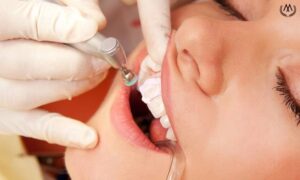Dental bridges are a common dental solution used to cover missing teeth and maintain a natural dental structure, providing an aesthetic appearance. This treatment involves replacing the missing teeth with a temporary or permanent bridge. The process is typically carried out in several stages and is customized based on the patient’s dental condition.
Examination and Planning
The process of making a dental bridge begins with an examination by a dentist. The dentist assesses the patient’s missing teeth and determines the treatment plan. The condition of the existing teeth is evaluated to check for suitability for a bridge. During this stage, the dentist also considers the patient’s expectations and aesthetic preferences.
Preparation Stage
Following the examination and planning, the tissues around the teeth that will support the bridge may need to be slightly reshaped. This procedure is usually done under local anesthesia and ensures that the teeth are adequately prepared for the bridge. The preparation stage is crucial for ensuring the bridge fits properly and has long-term durability.
Impression Taking and Temporary Bridge Application
After the preparation is complete, the dentist takes impressions of the teeth where the bridge will be placed. These impressions are sent to a laboratory to create a custom-made bridge. A temporary bridge may be applied while the permanent bridge is being prepared. The temporary bridge protects the teeth and allows the patient to continue their daily activities.
Bridge Placement and Adjustments
The permanent bridge, prepared in the laboratory, is typically placed during the next appointment. The dentist fits the bridge and checks its suitability. The shape and size of the bridge are adjusted to ensure it aligns well with the patient’s other teeth. This step ensures an aesthetic result while preserving the natural dental structure.
Final Checks and Care Recommendations
Once the bridge is in place, the dentist checks the patient’s chewing function and aesthetic appearance. After making any necessary adjustments, the dentist provides the patient with recommendations for bridge care and dental hygiene. Regular check-ups and good oral hygiene practices are essential for the longevity of the dental bridge.
Conclusion
Dental bridges effectively restore the aesthetic appearance and chewing function by covering missing teeth. This customized treatment for each patient ensures long-term success while preserving the natural dental structure. A comprehensive consultation with your dentist will help you determine the most suitable dental bridge treatment option.





